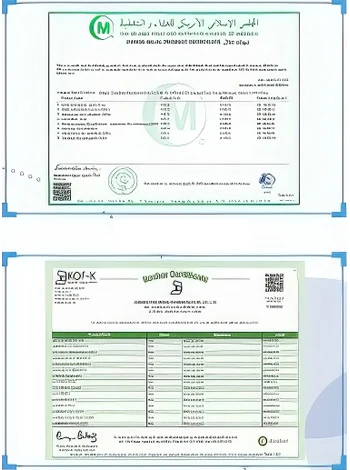



mono ammonium
Monoammonium Phosphate An Essential Nutrient for Agriculture
Monoammonium phosphate (MAP) is a widely used inorganic compound in agriculture, recognized for its vital role as a fertilizer. This compound consists of ammonium (NH4+) and phosphate (H2PO4-) ions, making it a valuable source of both nitrogen and phosphorus—two essential macronutrients required for plant growth. As the global population continues to rise, the demand for effective agricultural practices and nutrient management becomes ever more critical. Hence, understanding the properties, benefits, and applications of monoammonium phosphate is essential to sustainable farming and food production.
Chemical Composition and Properties
Monoammonium phosphate is represented chemically as NH4H2PO4. It is a crystalline solid that is soluble in water, which enhances its suitability for various agricultural applications. The compound appears as colorless or white granules, and its solubility allows it to be easily absorbed by plants when dissolved in soil moisture. The pH of MAP in solution is slightly acidic, which can help to create a suitable environment for crop growth, especially in calcareous (alkaline) soils where phosphorus availability may be limited.
Role in Plant Nutrition
In the world of plant nutrition, MAP serves a dual purpose. Nitrogen is integral to the formation of amino acids, which are the building blocks of proteins; these proteins are crucial for various metabolic processes within the plant. Phosphorus, on the other hand, plays an essential role in energy transfer through adenosine triphosphate (ATP), cellular respiration, and photosynthesis. Additionally, phosphorus is critical for root development and the formation of flowers and seeds.
The availability of nitrogen and phosphorus enhances plant vigor, leading to improved crop yields. With MAP, farmers can achieve better nitrogen and phosphorus nutrition, resulting in healthier plants, more abundant harvests, and increased economic returns. The compound is particularly beneficial for various crops, including cereals, legumes, fruits, and vegetables.
Application Methods
mono ammonium

MAP can be applied to crops in several ways, including broadcasting, banding, or mixing with other fertilizers. Broadcasting involves spreading the fertilizer evenly over the soil surface, while banding places it directly into the root zone, where plants can access the nutrients more efficiently. Farmers may choose the application method based on the specific crop needs, soil conditions, and farming practices.
One of the significant advantages of using MAP is its compatibility with other fertilizers and pesticides, allowing farmers to create custom blends tailored to their soil nutrient profiles and crop requirements. This versatility helps in optimizing fertilizer use efficiency and minimizing waste.
Environmental Considerations
While monoammonium phosphate is an effective fertilizer, its application must be managed carefully to mitigate environmental concerns. Excess application can lead to nutrient runoff into water bodies, contributing to problems like eutrophication, which harms aquatic ecosystems. To address these challenges, farmers are encouraged to employ best management practices, including soil testing, precise application rates, and timing to align with crop nutrient uptake.
Technological advancements such as precision agriculture and controlled-release fertilizers can also help improve the efficiency of MAP use. These innovations allow for more accurate application, reducing the risk of nutrient leaching and enhancing the overall sustainability of agricultural practices.
Conclusion
In conclusion, monoammonium phosphate is a critical resource in modern agriculture, providing essential nutrients that promote healthy plant growth and increased crop yields. As the agricultural sector faces the dual challenges of increasing food production and minimizing environmental impacts, the responsible use of MAP can play a significant role in achieving these goals. By understanding its properties, applications, and best practices for use, farmers can leverage monoammonium phosphate as an integral component of their nutrient management strategies, contributing to sustainable agriculture and food security for future generations.
-
Why Sodium Persulfate Is Everywhere NowNewsJul.07,2025
-
Why Polyacrylamide Is in High DemandNewsJul.07,2025
-
Understanding Paint Chemicals and Their ApplicationsNewsJul.07,2025
-
Smart Use Of Mining ChemicalsNewsJul.07,2025
-
Practical Uses of Potassium MonopersulfateNewsJul.07,2025
-
Agrochemicals In Real FarmingNewsJul.07,2025
-
Sodium Chlorite Hot UsesNewsJul.01,2025










